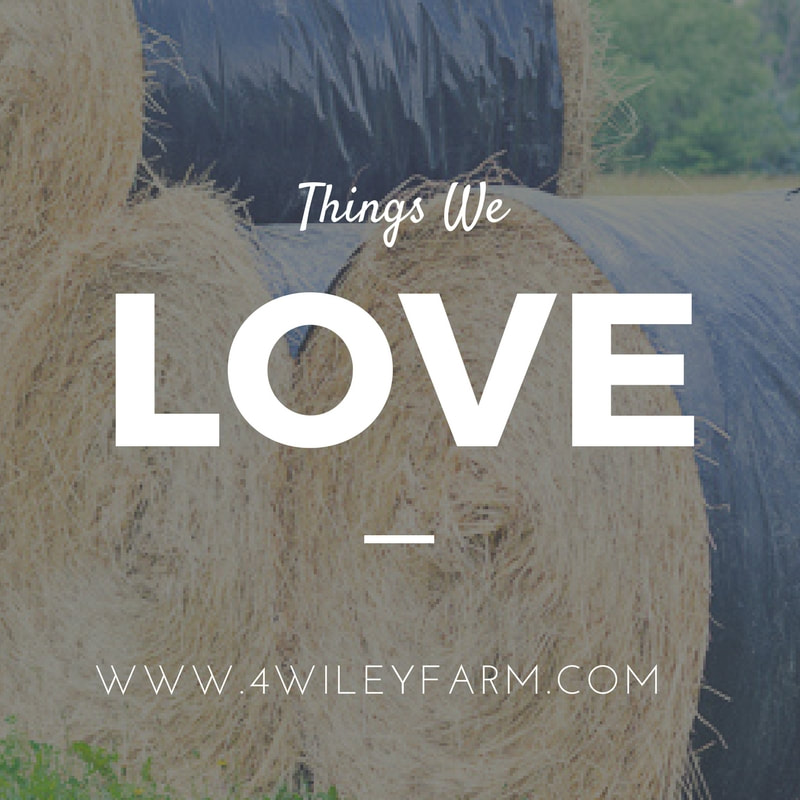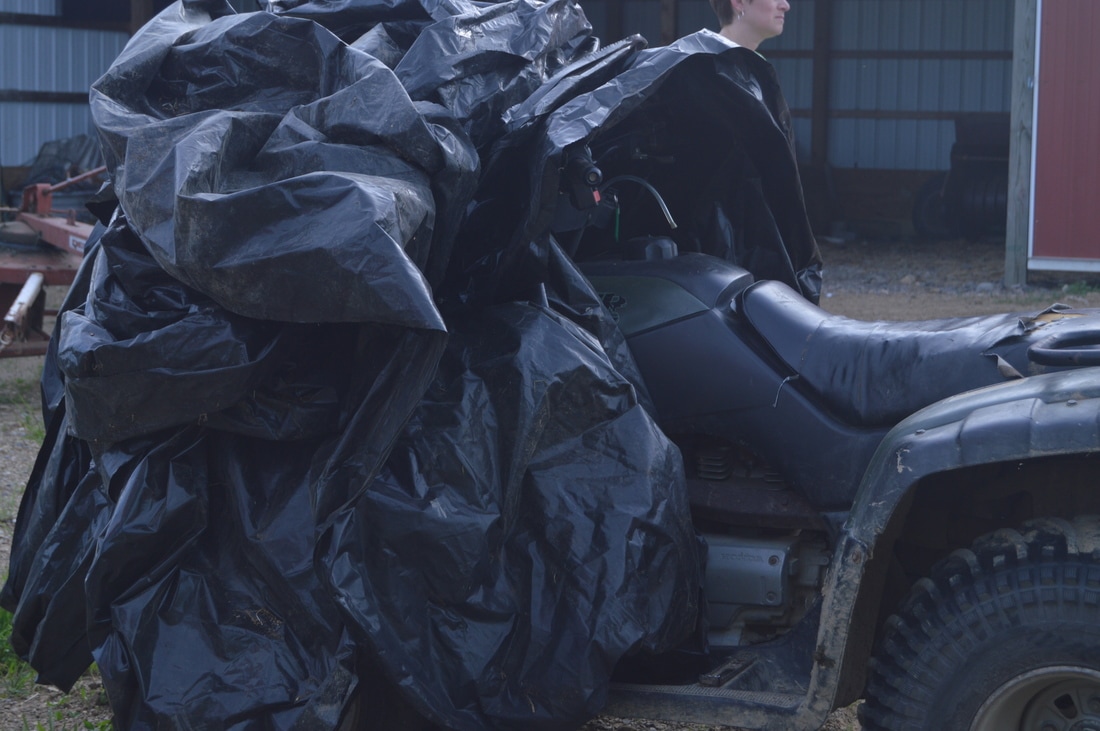|
The heat and humidity of summer is here, signalling the start of hay season. We finished up our first cutting this past week. Hay season is a community event around here. There are 4 families that work together to get everyone's hay done before the rain comes. Some of us need equipment and some need man power, but we all work together to make a pretty mean hay team. Each of us has different needs for our hay supplies and different storage options. Some need square bales, some need round bales, and we need both. Some make dry hay and some make wet hay. Some store all of their hay in the barn, some store all of it outside, and we store it both in the barn and outside. It can be a complicated game getting everyone and everything where it needs to be when it needs to be there. Add in the constant threat of pop-up thunderstorms and cranky machinery (everyone had at least one piece of equipment break down) and you have some pretty stressed out and sleep deprived people. Between the four farms, a lot of hay was made and a lot of cows and horses will be fed this winter. We ran out of hay this year and we are not about to let that happen again. We ended up wintering more cows than we had anticipated and by the middle of winter we were in major conservation mode. This year we are keeping at least 25 more bales than last year, just to be safe. We only have a small portion of our barn space that is available for hay storage. With so much hay, most of it has to be stored outside. Our solution...bales sleeves. Since our bales are stored outside, we want to do everything we can to protect them from the elements. We use bale sleeves from slip-ons Bale Bonnets. Just choose the size of sleeve that will fit your baler. These sleeves slide over each bale and only leave the ends open.  When you start to bale, make sure you take a sleeve to the field to make sure it fits properly. If you need to make adjustments to the bale size, do it now! We have learned the hard way and had bales too big for the sleeves, or sleeves that we have had to tug on with all our might. After 50 bales of tugging on too-tight sleeves, you will learn your lesson about checking size first. Start by fitting the sleeve on the bottom of the bale... And then pull it up over the top edge. Working together with the person on the other side of the bale, work the sleeve over the bale. All done. You can see the ends are left open. This comes in handy when there may be a little moisture left in the bale. The open ends allows the bale to breath and finish drying out. The open ends do receive a little bit of weathering, but it does not affect the quality of the bale. Our cows eat up every last bite. And we do it all again...and again...and again. Daniel is loving his seat on the tractor! The bales are then moved to their storage location along the fence. This area is close to the driveway so that we have easy access during winter snow and mud. We stack them 3 high and in 2 rows as room allows.  We have a good start with 63 bales sleeved and ready for winter feeding. As we feed the bales in the winter, the sleeves are folded and stored in an old trash can. When they get lazy or run out of room...you end of with this. We use the 4x4 bale sleeves and they end up costing us about $4.50 each. Our neighbor uses a table wrapper to wrap their wet silage bales. They spend about $4-$5 per bale, but the plastic has to be discarded when a bale is opened. The Bale Bonnets bale sleeves are very thick and we have re-used them for several years. Even if they end up with a few small holes in them, they still protect the hay very well. It is much cheaper for us to spend a little money on the bale sleeves than it is to lose hay to mold and decay. The bale sleeves are the perfect solution to protect our hay and free up precious barn space for equipment and cows. You might also like...
1 Comment
Leave a Reply. |
Let's Connect
AuthorHello! I am Heather... the city girl turned mom to manure loving country boys. My husband and I both grew up in the city, but spent weekends visiting grandparents in the country. We are first generation farmers who learn best by almost always doing things the hard way. I hope you enjoy following along with our adventures down on the farm. Archives
March 2024
Categories
All
Popular Posts |
The Cows |
The Family |
Follow Us |
Associations |
















 RSS Feed
RSS Feed


